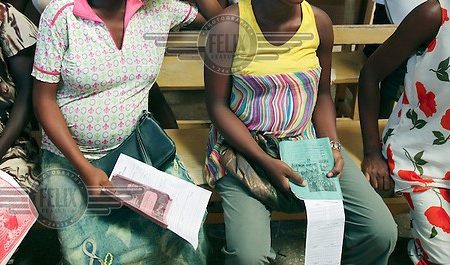A total of 4,169 pregnant women died in five years in Ghana.
Maternal mortality refers to deaths due to complications from pregnancy or childbirth.
These death of pregnant women happened between 2018 and 2022.
As of the end of 2022, institutional maternal mortality ratio decreased marginally from 111 per 100,000 live births to 102 per 100,000 live births.
875 die in 2018
Data available at the Ghana Health Service (GHS) shows a total number of 875 maternal deaths in 2018.
838 die in 2019
However, the maternal deaths decreased to 838 in 2019, a reduction of 37 deaths.
776 die in 2020
In 2020, deaths due to complications from pregnancy or childbirth declined by 62 to 776 as at the end of that year.
875 die in 2021
However, maternal deaths increased sharply by 99 to 875 as at the end of 2021.
805 die in 2022
Deaths due to complications from pregnancy or childbirth decreased by 70 to 805 deaths as at the close of 2022.
The leading causes of maternal death are hypertensive disorders (37.3%), hemorrhage (20.6%), Sickle cell disease (8.3%), sepsis (8.3%), and pulmonary embolism (8.0%).
Over the past few decades, the maternal mortality rate in Ghana has seen a steady decline due to several factors and robust systems put in place to ensure safe pregnancy and delivery.
Collaborative sacrifices of stakeholders in health resulted in significant improvements in maternal and newborn health outcomes.
Maternal death can be caused directly by postpartum haemorrhage, pre-eclampsia and hypertensive disorders, pregnancy-related infections, and complications of unsafe abortion, as well as indirectly by pre-existing medical conditions aggravated by the pregnancy.
Free services for those who could not afford to pay full price made a huge impact on pregnant women in Ghana.
The absolute number of the country’s midwifery workforce has also been increasing, positioning Ghana to surpass the WHO standard of 6–7 midwives per 1000 institutional deliveries, by almost two folds, to 13 midwives per 1000 institutional deliveries.
The Midwife to Women in fertility age (WIFA) ratio had equally been improving, moving from one midwife to 720 women in fertility age in 2017 to one midwife to 387 women in fertility age in 2021.
About 79% of women giving birth in Ghana were assisted by a nurse or midwife, a trained professional who helps during pregnancy and labor.
Many pregnant women in rural areas do not have access to quality healthcare services, and as a result, they do not receive adequate prenatal care.
The nearest health facility can be several miles away from the community where women in labor can be carried on bicycles and motorcycles to seek medical attention.
- Ghana must champion democracy in the Sahel- Jinapor - 2 April 2025
- 2 new levies proposed by 2 minsters - 2 April 2025
- BoG to clean up SDIs sector – Dr. Asiama - 2 April 2025

